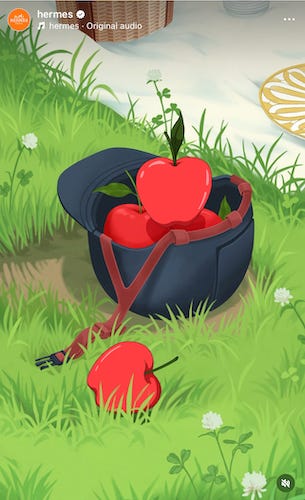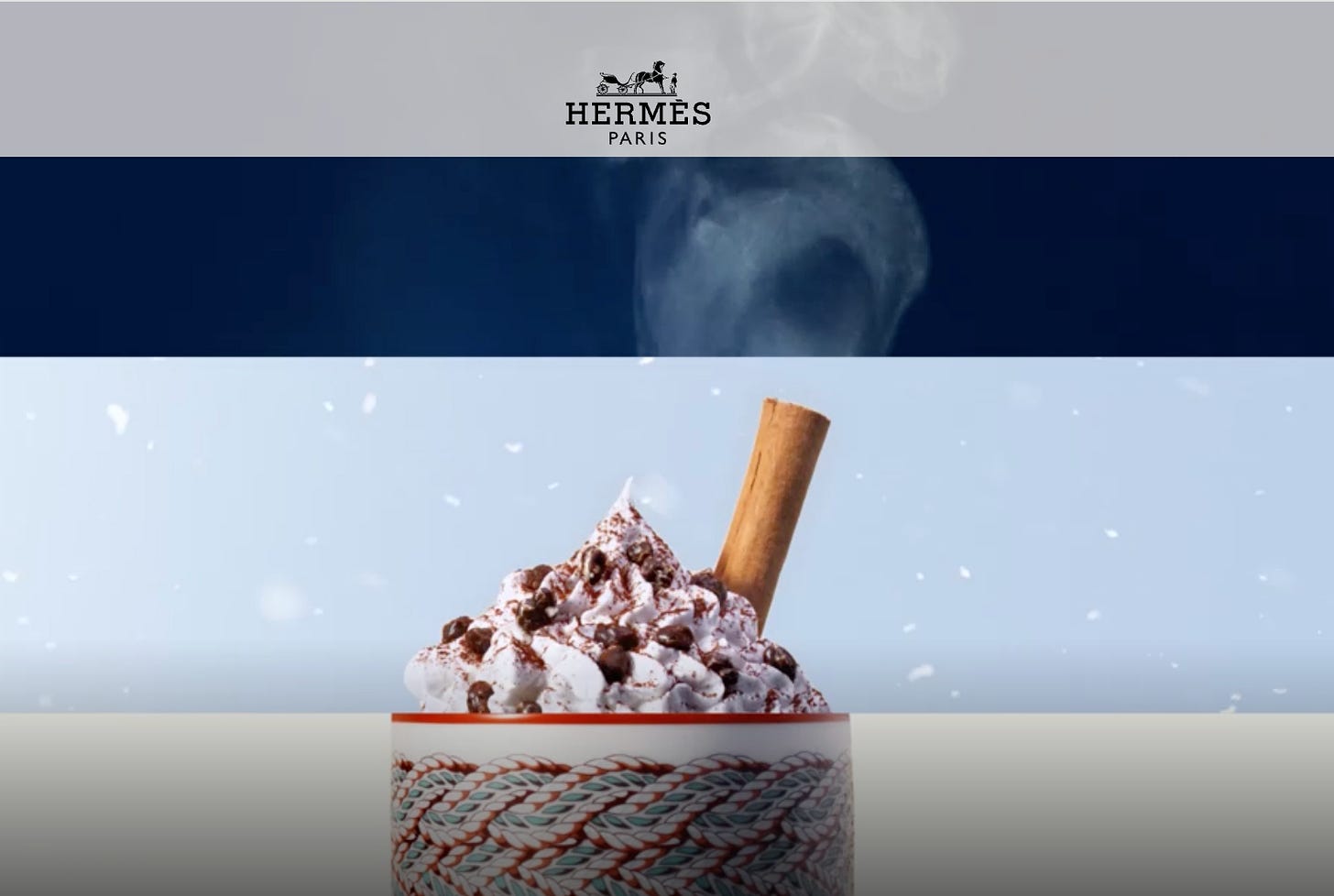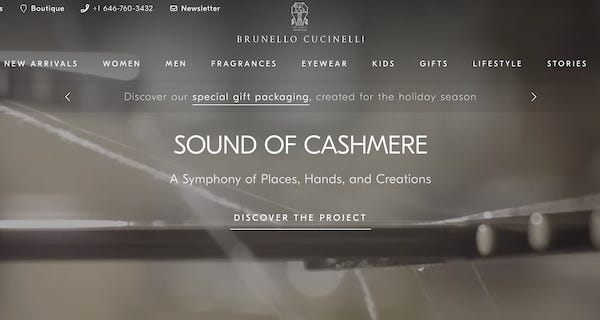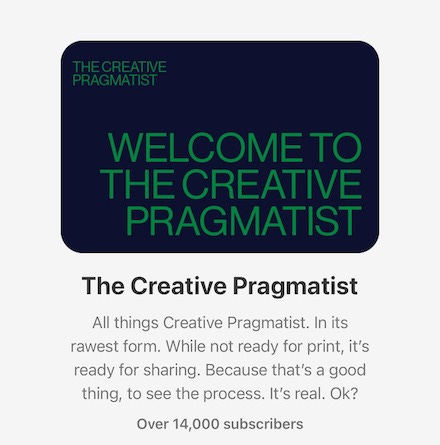Top 6 Brands in Fashion and Luxury Content for 2024
FSW names the top 6 brands in fashion and luxury content strategy for 2024.
It is now a euphemism that we live in a world of content.
The digital landscape is so dominated by curated and algorithmic-driven content that real-life experiences can feel disjointed or chaotic by comparison. This is a truth of modern life that affects consumer behavior and expectations and, in turn, shapes how brands should think about their content and the practices, processes, and tools behind it.
For fashion, luxury, and retail brands, storytelling matters not just because it forms the fundamental building blocks of human experience but also because stories are one of the few superpowers brands have left to define themselves and stand out among consumers in an ocean of cross-channel content.
As 2024 comes to a close, the fashion and luxury brands that are winning with consumers are the same brands that are winning with content and content strategy in different ways. This is not an accident.
Holistic content strategy is not just about digital content or even marketing content. Consumers expect your brand to feel the same online and in person and crave experiences that entertain, inform, and inspire.
The FSW team has compiled a list of our top 6 brands in fashion and luxury content from the past year. We were so impressed with these brands that we could not narrow down our list to 5 brands, even though it is more common to rank companies this way. While these brands each approach content differently, what they have in common is a strong sense of brand story and content strategy that they convey through content across channels in unique, brand-appropriate, and consumer-focused ways.
The Top 6 in Fashion Content for 2024
1. Hermès

The golden child of fashion content and content strategy is Hermès, which had a banner year with content in 2024. Of course, recently, every year has been a banner year for them.
As we explored at length in a structured case study, Hermès is all about brand story, leveraging a signature combination of heritage, design, and digital innovation. It leverages a carefully crafted content strategy to consistently communicate its brand messaging across channels in a way that is well executed and attenuated to the channel.
Hermès has a good—and well-organized—e-commerce site with a unique design that makes clever and extensive use of animations and illustrations for effect. On social channels, the brand made heavy use of original films, animations, and illustrations, including collaborations with talented young artists who reimagined the brand’s products and heritage in original, highly creative ways. Most of these Hermès campaigns on its Instagram channel were purposefully tongue-in-cheek (like the video of the horse disguising itself as a snowball and the cartoon of an apple that turns into a bag) and proved a clever, modern way to appeal to Gen Z and younger consumers and build community while remaining true to its brand values.
The capstone of Hermès’ year in content was undoubtedly the 60 Minutes segment, “Hermès and the success of the coveted Birkin bag,” which provided a fascinating in-depth look at the brand. The most interesting part was not Pierre-Alexis Dumas’s now overquoted interview with Sharon Alfonsi. Instead, the best content—as in the most riveting brand storytelling in action—came when Alfonsi walked around the atelier, chatting with the artisans about their work and getting unique insights into their incredibly detailed craftsmanship and deep expertise.
2. Miu Miu
Miu Miu easily won the hearts of luxury fashion shoppers in 2024. While this surprised many, Vogue Business noted that the brand’s hot streak resulted from a turnaround strategy that began in 2017 and involved strategic investments in product development, distribution, and communications.
As we explored in our 2024 Selected Luxury Instagram Shoppability Index, Miu Miu is one of the few luxury brands with a fully shoppable Instagram account. Also, the brand’s influencer marketing efforts paid off, with CreatorIQ reporting that Instagram made up 83% of the brand's earned media value, 84% of its impressions, and 85% of its engagement. Miu Miu’s deep understanding its consumers and how to give them an easy path to purchase its highly covetable products proved a smart move and seemed to have few downside risks, as demonstrated by the brand’s soaring financials in what was a tough year for many other brands.
3. Brunello Cucinelli
For heritage brands, content strategy can be a challenge, as they have to balance historical brand perceptions with the changing tastes of a modern digital-savvy audience. If “quiet luxury” came into its own in 2024, no brand encapsulated this concept better and in a more content-centric way than Brunello Cucinelli.
As we recently explored, Brunello Cucinelli's holiday campaign blended humanistic storytelling in a digitally immersive way, nicely using elements of guided content to encourage users to find and discover its holiday collection. This was part of the rollout of an innovative holistic brand content strategy that deeply resonates with the brand’s commitment to luxury brand storytelling.
We wondered how Brunello Cucinelli could possibly top its 2024 holiday activation. Enter its latest project, “The Sound of Cashmere," which is described as a “symphony of places, hands, and creations.” This project is a multi-disciplinary collaboration with sound designer Chiara Luzzana and forms a synaesthetic exploration of art, textiles, and creativity.
While other luxury brands grapple with how to build an integrated approach to content across platforms, the sheer creativity and phased implementation of Brunello Cucinelli’s content strategy represents an on-brand, well-thought-out plan that perfectly shows how content and technology can work together to bring a more authentic approach to digital customer experience. This combination of heritage and innovation not only enhanced customer engagement but also likely contributed to a 12.7% increase in revenue during the first nine months of 2024, which highlights the efficacy of the brand’s content strategy.
4. Zara

Say what you will about fast fashion, but few brands comprehensively do content and storytelling across platforms better than Spanish brand Zara.
Under the auspices of Inditex, Zara has invested heavily in its mobile app and engages in a lot of experimental content through the platform. This included a behind-the-scenes, fully shoppable interactive product design experience designed to promote sustainability. Similarly, Zara engaged in some splashy big-name collaborations with the likes of YSL-alum Stefano Pilati and Kate Moss, which had such an elevated design and presentation that fashion pundits questioned whether or not Zara should now be considered luxury.
The Zara team also dived deep into “shoppertainment” on their website and app, hosting live-shopping shows featuring celebrities and influencers targeted to specific markets, which included Cindy Crawford and her model daughter Kaia Gerber for events targeted to the US, UK, and Europe. The brand’s early experiments in live-shopping performed well in pilot testing with Chinese audiences on Douyin, according to eMarketer.
5. Jo Malone London
The year's cutest content strategy award belongs to the team at Jo Malone London for its 2024 Paddington Bear campaign. At FSW, we were already fans of the brand’s intuitive e-commerce website and consistent approach to content across channels. But the Paddington Bear marketing campaign felt extra special, bringing to life one of childhood fiction’s favorite characters in a series of charming digital and IRL activations and product launches, including a limited-edition Orange Marmalade scent. The Jo Malone London team brought charming animated videos, influencer collaborations on social media channels, and a series of in-person events across the globe, all supporting UNICEF.
6. Tibi
We have to give a final shoutout to Amy Smilovic and her team at Tibi for their brilliant editorial-focused, community-centric content strategy through “The Creative Pragmatist” on Substack and their podcast. For a smaller brand, Tibi has been growing steadily and building strategically through a core, content-centric approach closely targeted to their target audiences without spreading their teams—or their messaging—too thin. As Julian Randall notes in a recent profile for Essence (“What Makes Tibi So Cool”), he “learned of the brand … during the pandemic when they started “Style Class,” a series of live Instagram sessions on Wednesdays that allowed consumers to further sink their teeth into the brand.”
In fashion and luxury, getting content right does not require a big team, a big budget, or even omnichannel distribution. Yes, brands need to be where their target customers are but that does not mean they should try to be on all the channels all the time. Quite the contrary, as Tibi’s smaller-scale, community-focused content shows.
Getting content right necessitates content strategy, which means brands need to know not only their “why” for content but also what value it brings to their target audiences. Having a content marketing strategy for executing specific campaigns is no longer enough for fashion, luxury, and retail brands without an overarching content strategy that is closely linked to corporate vision and customer needs.







